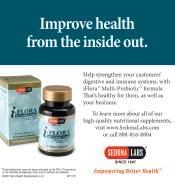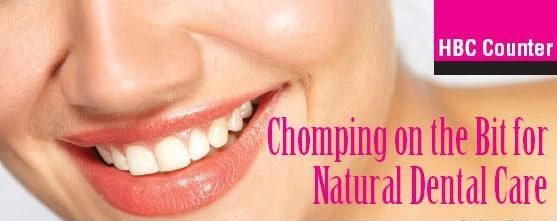Ever wonder how people cleaned and whitened their teeth before fluoride? As early as ancient times, people tackled oral health with botanicals. But over the years, there’s been a transition to conventional treatments that are abrasive, chemical-based, expensive and may be harmful in large doses (such as with sodium fluoride) (1). With all of nature’s ingredients that are suitable for oral care, why risk using conventional products?
Armed to the Teeth
• Chew away plaque? Yes! Acacia arabica, a type of gum-yielding tree, can significantly reduce plaqu e (compared with sugar-free gum) primarily by helping with the early deposition of plaque (2).
e (compared with sugar-free gum) primarily by helping with the early deposition of plaque (2).
• Neem has long been used for teeth cleaning because of its anti-plaque and anti-bacterial characteristics (3). It has an anti-microbial effect on S. mutans, S. salivarius, S. mitis and S. sanguis, which are involved in the development of dental decay (3).
• In various studies, sodium bicarbonate (baking soda) whitened teeth and reduced the appearance of stains more effectively than the commercial standard (4).
• Xylitol, often used as an sweetener, may help reduce tooth decay by preventing bacteria from sticking to the teeth instead of killing it like other ingredients. It has been proven to fight cavities, plaque, dry mouth and bad breath as well as to help remineralize tooth enamel (5).
• Silica is also often added to teeth-whitening products for stain removal without the harsh abrasions.
A Mouth in Flames
Canker sores and inflamed gums can be extremely painful and disrupt hygiene and eating patterns, but there are common herbs and oils that can provide relief. Chickweed may temporarily relieve canker sore pain when used as a mouthwash, while aloe vera can temporarily soothe inflamed gums and sores when applied in the mouth. Tea tree oil, which has an antimicrobial effect, can temporarily relieve pain when rubbed on inflamed gums and may prevent periodontal disease and canker sores (1). Other products that offer gum support and promote sore healing include CoQ10 and calendula oil.
A Jaw Unhinged
Temporomandibular joint disorder (TMJ) is a jaw imbalance that, if combined with poor dental habits, can cause extreme discomfort and problems. Instead of, or along with prescribed medications, herbs can help with the pain. Comfrey can be used as a compress, which can ease jaw tension and relieve pain in the jaw. Also, tea containing a mixture of lobelia, black cohosh, skullcap, cayenne and myrrh may ease pain (1).
High and Dry
Dry mouth is an uncomfortable side effect of medication or of not producing enough saliva. Studies show that echinacea (6) as well as prickly ash (7) increases the body’s production of saliva. Other solutions to dry mouth include the use of natural dry mouth sprays and washes with ingredients like xylitol, chamomile, aloe vera juice and fig. WF
References
1. F.P. Stay, The Complete Book of Dental Remedies (Avery, 1995).
2. M.I. Gazi, “The Finding of Antiplaque Features in Acacia Arabica Type of Chewing Gum,” J. Clin. Periodontol. 18 (1), 75–77 (1991).
3. G.M. Prashant, et al., “The Effect of Mango and Neem Extract on Four Organisms Causing Dental Cavities,” Indian J. Dent. Res. 18 (4), 148–151 (2007).
4. M.S. Putt, et al., “Extrinsic Tooth Stain Removal Efficacy of a Sodium Bicarbonate Dual-Phase Dentifrice Containing Calcium and Phosphate in a Six-Week Clinical Trial,” J. Clin. Dent.15 (3), 71–75 (2004).
5. M.M. Mäkinen, et al., “Thirty-Nine-Month Xylitol Chewing-Gum Programme in Initially 8-Year-Old School Children,” Int. Dent. J. 58 (1), 41–50 (2008).
6. N. Sterer and Y. Rubinstein, “Effect of Various Natural Medicinals on Salivary Protein Putrefaction and Malodor Production,” Quintessence Int. 37 (8), 653–658 (2006).
7. C. Dean, Natural Prescriptions for Common Ailments (McGraw-Hill, New York, NY, 2001).
Published in WholeFoods Magazine, September 2008









